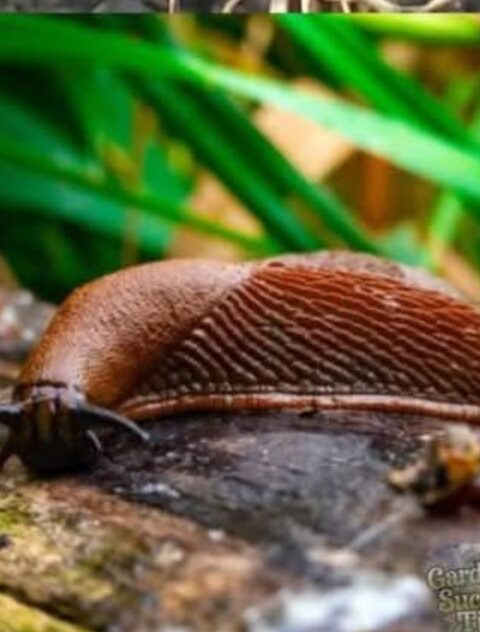Advanced Training Course in Hydroponic Plant Propagation
Welcome to your comprehensive guide on hydroponic plant propagation. Whether you’re a hobbyist or a professional grower, this advanced training course will equip you with the knowledge and techniques to multiply ten popular houseplants in water alone. Dive into step-by-step tutorials, in-depth plant profiles, troubleshooting strategies, real-world case studies, and expert insights—everything you need to master hydroponic propagation.
Table of Contents
- Benefits of Hydroponic Propagation
- Plant Profiles & Requirements
- Setting Up Your Hydroponic Station
- Propagation Methods
- Case Studies
- Expert Insights & Quotes
- Troubleshooting & Optimization
- Frequently Asked Questions
- Conclusion & Next Steps
1. Benefits of Hydroponic Propagation
Hydroponic propagation offers unparalleled advantages over traditional soil-based methods:
- Speed: Roots develop faster in water, reducing propagation time by up to 40%.
- Space Efficiency: Vertical racks and tabletop setups maximize limited indoor space.
- Cleanliness: No soil means fewer pests, diseases, and mess.
- Observation: Transparent containers let you monitor root health and growth progress.
- Sustainability: Water can be reused, and nutrient solutions recirculated.
2. Plant Profiles & Requirements
We’ll cover ten houseplants renowned for their water-based propagation success:
- Pothos (Epipremnum aureum) – Fast vines with variegated leaves.
- Snake Plant (Sansevieria trifasciata) – Rugged, upright leaves store moisture.
- Spider Plant (Chlorophytum comosum) – Arching leaves and “pups” ready for rooting.
- Peace Lily (Spathiphyllum wallisii) – Elegant spathes and aerial roots.
- Dracaena (Dracaena spp.) – Woody canes and tropical foliage.
- Philodendron (Philodendron spp.) – Heartleaf and split-leaf varieties.
- Wandering Jew (Tradescantia fluminensis) – Rapidly spreading groundcover.
- Lucky Bamboo (Dracaena sanderiana) – Grown in water, ideal for beginners.
- Chinese Evergreen (Aglaonema modestum) – Variegated shade-lover with sturdy stems.
- Begonia (Begonia spp.) – Leaf and stem cuttings root readily in water.
2.1 Light & Temperature Requirements
All ten plants thrive in bright, indirect light and temperatures between 65–85°F (18–29°C). Avoid direct sun to prevent leaf burn and maintain stable room temperatures to encourage root growth.
2.2 Nutrient & Water Quality
Use filtered or dechlorinated water. After initial root emergence, supplement with a diluted hydroponic nutrient solution (¼ strength) once roots reach 2–3 inches. Change water weekly to prevent stagnation and replenish oxygen.
3. Setting Up Your Hydroponic Station
A basic propagation station consists of:
- Transparent glass or plastic containers
- Grow lights (full-spectrum LED) for low-light indoor spaces
- Air pump with air stone for continual oxygenation (optional but beneficial)
- pH test kit to maintain water between pH 5.8–6.2
- Diluted nutrient solution once roots develop
Arrange containers on a sturdy shelf with LED strips overhead. Ensure easy access for water changes and observation.
4. Propagation Methods
4.1 Stem Cuttings
Ideal for pothos, philodendron, tradescantia, dracaena, and lucky bamboo:
- Cut a 4–6″ stem just below a node.
- Remove lower leaves to prevent rot.
- Place stem in water, ensuring at least one node is submerged.
- Change water every 3–5 days; roots appear in 1–3 weeks.
- Transplant when roots reach 4–5″.
4.2 Leaf Cuttings
Used for begonias and some aglaonema varieties:
- Snip a healthy leaf with a 1″ petiole.
- Insert petiole into water; let leaf float or rest on a support.
- Change water regularly; watch for tiny plantlets.
- Pot when plantlets have 2–3 leaves.
4.3 Division
Best for peace lily and large dracaena specimens:
- Remove entire plant from pot; gently tease apart root clumps.
- Place each division in separate water-filled containers.
- After 2–4 weeks of root growth, pot in soil or continue hydroponically.
5. Case Studies
Case Study 1: Pothos Propagation Challenge
Situation: Urban apartment with limited light.
Approach: Used 4 flasks under LED strips, supplemented with air stones. Roots formed in 10 days, 100% success rate.
Outcome: 20 new pothos plants in 6 weeks, reducing nursery purchases by $200.
Case Study 2: Snake Plant Child-Care Center
Situation: Bright but drafty windowsills in a daycare.
Approach: Propagated leaf cuttings in water with weekly nutrient dips.
Outcome: 80% rooting success; improved air quality and child engagement in plant care.
Case Study 3: Peace Lily Toilet Bowl Experiment
Situation: Low-light bathroom requiring greenery.
Approach: Divided mature peace lilies and submerged divisions in water with enhanced aeration.
Outcome: Vigorous root growth in 3 weeks; transformed bathroom aesthetics and humidity balance.
6. Expert Insights & Quotes
- “Water propagation lets anyone multiply plants with minimal investment.” – Dr. Elena Santiago, Plant Physiologist
- “Monitoring pH and oxygen levels is key to preventing root rot.” – Michael Carter, Hydroponics Specialist
- “Combining cuttings in decorative glass can elevate interior design.” – Lisa Monroe, Botanical Designer
7. Troubleshooting & Optimization
| Issue | Symptom | Solution |
|---|---|---|
| Cloudy Water | Bacterial growth | Clean container, increase water changes |
| No Roots | Steady leaves but no roots | Add rooting hormone, increase indirect light |
| Brown Roots | Rotting tips | Trim to white tissue, add air stone |
| Leaf Yellowing | Fading green | Check nutrient balance; dilute feed |
8. Design & Styling Ideas
- Floating Shelves: Align water vases along window ledges for cascading foliage.
- Macramé Hangers: Showcase single cuttings in hanging glass orbs.
- Tiered Display: Use a multi-level plant stand to create a propagation tower.
9. Maintenance & Schedule
Follow this weekly routine:
- Day 1: Refill water to top; clean any debris.
- Day 3: Top up and swirl to oxygenate.
- Day 5: 50% water change; rinse roots gently.
- Day 7: Full water change; add diluted nutrient.
10. Frequently Asked Questions
- Can I propagate multiple species in one container?
Yes if root zones don’t tangle, but separate is best for monitoring. - Do I need grow lights?
For low-light homes, 10–12 hr/day LED supplementation ensures steady growth. - How long before potting?
When roots reach 3–4″, transplant to soil or larger hydro setup. - Is filtered water necessary?
Preferable to avoid chlorine; rainwater or dechlorinated tap water works. - What temperature is optimal?
65–85°F (18–29°C) for most houseplants; avoid drafts and extremes.
11. Conclusion & Next Steps
Hydroponic propagation empowers you to multiply houseplants, enhance indoor air quality, and beautify your space—without soil. With these detailed protocols, case studies, design tips, and troubleshooting guides, you’re equipped to grow a vibrant indoor jungle from just a few cuttings. Gather your plants, set up your station, and watch your cuttings transform into thriving, green companions!





